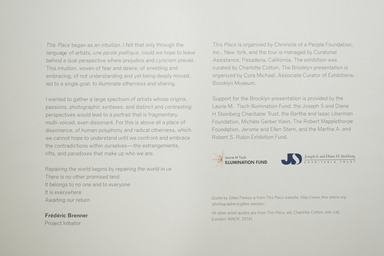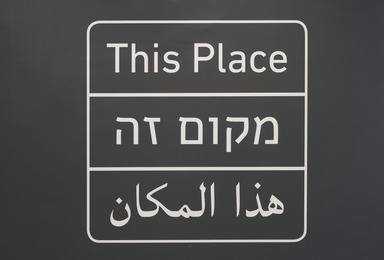

This Place, February 12, 2016 through June 05, 2016 (Image: DIG_E_2016_This_Place_01_PS11.jpg Brooklyn Museum photograph, 2016)

This Place, February 12, 2016 through June 05, 2016 (Image: DIG_E_2016_This_Place_02_PS11.jpg Brooklyn Museum photograph, 2016)

This Place, February 12, 2016 through June 05, 2016 (Image: DIG_E_2016_This_Place_03_PS11.jpg Brooklyn Museum photograph, 2016)
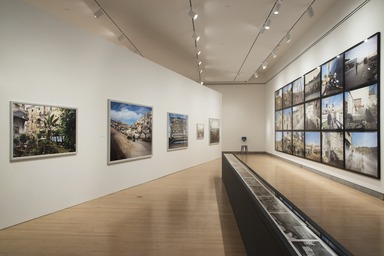
This Place, February 12, 2016 through June 05, 2016 (Image: DIG_E_2016_This_Place_04_PS11.jpg Brooklyn Museum photograph, 2016)
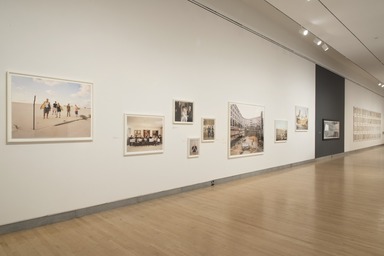
This Place, February 12, 2016 through June 05, 2016 (Image: DIG_E_2016_This_Place_05_PS11.jpg Brooklyn Museum photograph, 2016)
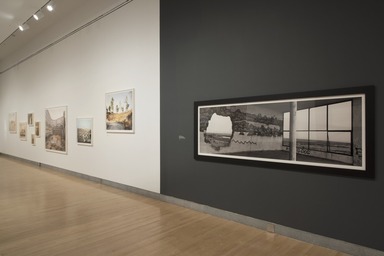
This Place, February 12, 2016 through June 05, 2016 (Image: DIG_E_2016_This_Place_06_PS11.jpg Brooklyn Museum photograph, 2016)
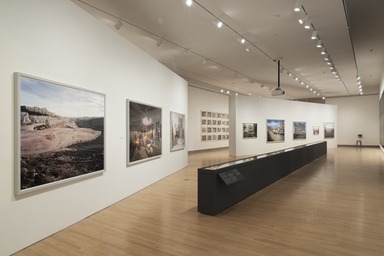
This Place, February 12, 2016 through June 05, 2016 (Image: DIG_E_2016_This_Place_07_PS11.jpg Brooklyn Museum photograph, 2016)
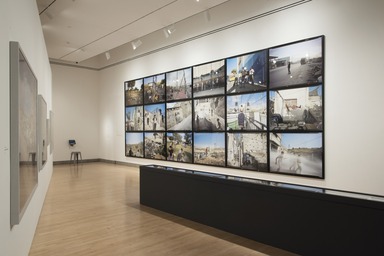
This Place, February 12, 2016 through June 05, 2016 (Image: DIG_E_2016_This_Place_08_PS11.jpg Brooklyn Museum photograph, 2016)

This Place, February 12, 2016 through June 05, 2016 (Image: DIG_E_2016_This_Place_09_PS11.jpg Brooklyn Museum photograph, 2016)
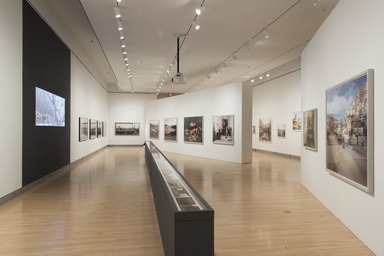
This Place, February 12, 2016 through June 05, 2016 (Image: DIG_E_2016_This_Place_10_PS11.jpg Brooklyn Museum photograph, 2016)
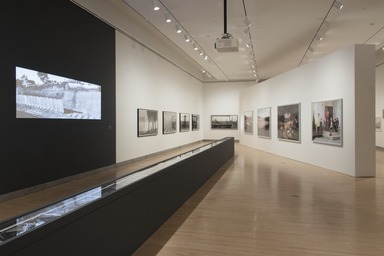
This Place, February 12, 2016 through June 05, 2016 (Image: DIG_E_2016_This_Place_11_PS11.jpg Brooklyn Museum photograph, 2016)
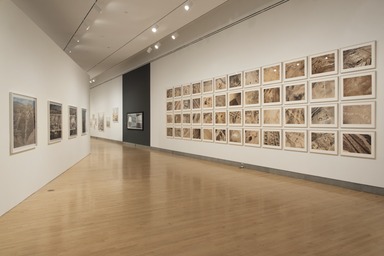
This Place, February 12, 2016 through June 05, 2016 (Image: DIG_E_2016_This_Place_12_PS11.jpg Brooklyn Museum photograph, 2016)
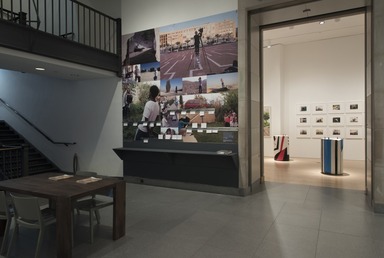
This Place, February 12, 2016 through June 05, 2016 (Image: DIG_E_2016_This_Place_13_PS11.jpg Brooklyn Museum photograph, 2016)
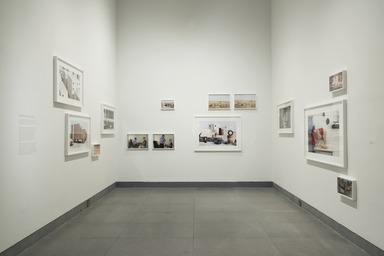
This Place, February 12, 2016 through June 05, 2016 (Image: DIG_E_2016_This_Place_14_PS11.jpg Brooklyn Museum photograph, 2016)
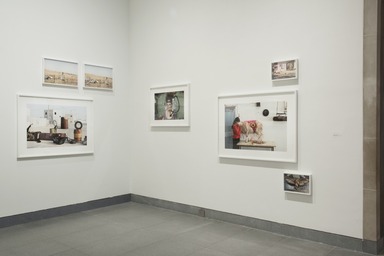
This Place, February 12, 2016 through June 05, 2016 (Image: DIG_E_2016_This_Place_15_PS11.jpg Brooklyn Museum photograph, 2016)

This Place, February 12, 2016 through June 05, 2016 (Image: DIG_E_2016_This_Place_16_PS11.jpg Brooklyn Museum photograph, 2016)

This Place, February 12, 2016 through June 05, 2016 (Image: DIG_E_2016_This_Place_17_PS11.jpg Brooklyn Museum photograph, 2016)
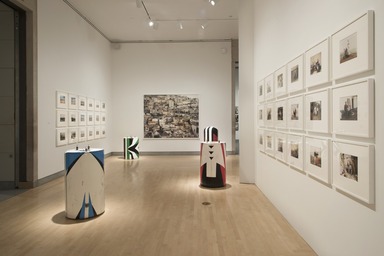
This Place, February 12, 2016 through June 05, 2016 (Image: DIG_E_2016_This_Place_18_PS11.jpg Brooklyn Museum photograph, 2016)
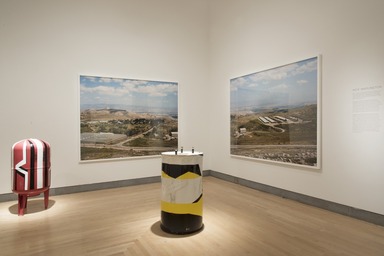
This Place, February 12, 2016 through June 05, 2016 (Image: DIG_E_2016_This_Place_19_PS11.jpg Brooklyn Museum photograph, 2016)
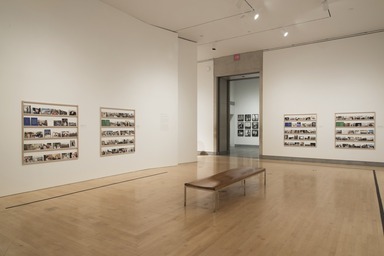
This Place, February 12, 2016 through June 05, 2016 (Image: DIG_E_2016_This_Place_20_PS11.jpg Brooklyn Museum photograph, 2016)

This Place, February 12, 2016 through June 05, 2016 (Image: DIG_E_2016_This_Place_21_PS11.jpg Brooklyn Museum photograph, 2016)
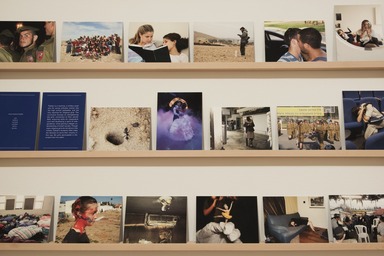
This Place, February 12, 2016 through June 05, 2016 (Image: DIG_E_2016_This_Place_22_PS11.jpg Brooklyn Museum photograph, 2016)
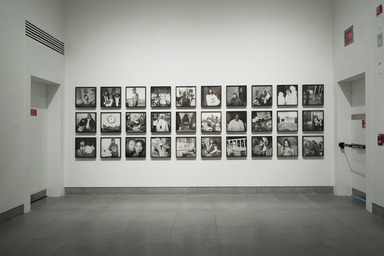
This Place, February 12, 2016 through June 05, 2016 (Image: DIG_E_2016_This_Place_23_PS11.jpg Brooklyn Museum photograph, 2016)
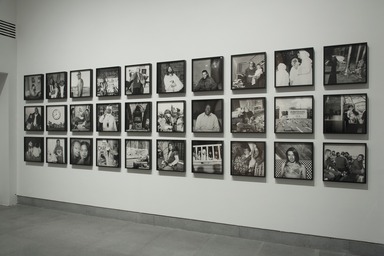
This Place, February 12, 2016 through June 05, 2016 (Image: DIG_E_2016_This_Place_24_PS11.jpg Brooklyn Museum photograph, 2016)
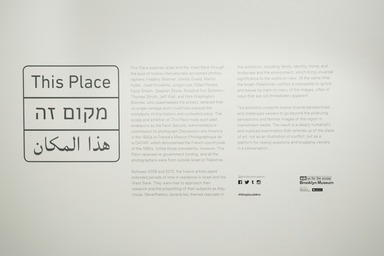
This Place, February 12, 2016 through June 05, 2016 (Image: DIG_E_2016_This_Place_25_PS11.jpg Brooklyn Museum photograph, 2016)
This Place
-
Thomas Struth
My interest, or hope, or intent is to address something which has a larger scale, a larger value, than the specific details or locations shown. The photographs must ultimately be driven by interests on a more general level.
Thomas Struth (German, born 1954) traveled to Israel and the West Bank six times between 2009 and 2014, working in a variety of locations, including Tel Aviv, Jerusalem, the Golan Heights, Ramallah, and Hebron. Although he concentrated on subjects that had long defined his photographic practice—portraits, landscape, architecture, and technology—he also took on the challenge of making pictures in this specific region of conflict.
Without telling a literal story of places and people, Struth's subtle photographs reveal how personal feelings of anger, love, fear, faith, and doubt are shaped by public history. His photograph of Tel Aviv's City Hall, for instance, marks the spot where Prime Minister Yitzak Rabin was assassinated on November 4, 1995. Struth purposely photographed his subject at twilight in order to give a symbolic emotional charge to the generic civic architecture. -
Wendy Ewald
I could have delved into one village—I love working that way too. But I chose a different way of telling a story that's perhaps more subtle and involves looking at a place from different points of view.
For more than four decades Wendy Ewald (American, born 1951) has employed participatory photography to engage and educate children and adults around the world, from rural Appalachia to India. Instead of photographing her subjects, Ewald invites them to photograph themselves and their lives, teaching participants to empower themselves through the art of photography.
For This Place, Ewald collaborated with fourteen communities to create a collective portrait of life in Israel and the West Bank. She worked with elementary-school students in Nazareth, Jewish Orthodox girls at an army training school on the Dead Sea coast, shopkeepers in the famous Mahane Yehuda market in Jerusalem, Druze middle-school children in the village of Julis, elderly Palestinian women in East Jerusalem, and high-tech workers in Tel Aviv, among others. Their pictures capture the unique character of each community, and allow us to see the world through each photographer's eyes. -
Fazal Sheikh
In all the time I've been there, this is what resonates with me the most: the idea of a scar just beneath the surface. Rather than leveling accusations at either side, my wish has been to try and address the wound.
Fazal Sheikh (American, born 1965) addresses global human rights issues in his photographs, often through portraits of marginalized and displaced people. The works seen here are aerial landscapes and belong to his series Desert Bloom, which explores the traumatic legacy of the 1948 Arab-Israeli war. The title refers to the call of David Ben-Gurion, Israel's first prime minister, to "make the desert bloom" through Jewish settlement, agriculture, and development.
Flying above the Negev Desert, Sheikh photographed sites of existing and former villages of the Bedouin, a traditionally nomadic people who have lived there for more than five hundred years. Some of the villages have been displaced, and others completely erased through reforestation, settlements, and Israeli military and industrial interventions. In Sheikh's images the various lines and patterns marking the earth's surface testify to these radical transformations. The printed brochure that accompanies Sheikh's images provides a detailed history of each site. -
Frédéric Brenner
Ideologies are a betrayal of the humane in the human. They give us the illusion of belonging while they make us strangers to what is most intimate within us.
Frédéric Brenner (French, born 1959) made his first photograph for An Archeology of Fear and Desire (the monographic publication of his work from Israel and the West Bank) in 2009. The Palace Hotel, which shows the peeled-back innards of a hotel in Jerusalem (now the Waldorf-Astoria), became the prompt for the overall approach of to his individual project—a pungent and compassionate representation of life in contemporary Israel.
Working with an 8 x 10 inch large-format camera and for the first time in color, Brenner searched for visual signs of longing, belonging, and exclusion in a land of devouring myths. His photographs observe the tyranny of roles in this conflicted society and its cost in human terms, in estrangement from intimacy and shared humanity. Brenner's installation offers a narrative of contingent and universal meaning, articulated through the assembling of seemingly disparate and paradoxical situations and subjects. Every picture is formally definite, and each true to the human condition and the legacy of the region's turbulent history.
-
Martin Kollar
I wasn't following the consequences of the conflict. I was trying to deal with how the future can be imagined in Israel—what might happen, the fear of possible danger, what that can look like.
Martin Kollar (Slovak, born 1971) spent 2010 living in Israel, acutely aware of his status as a guest but also bringing to bear his own experience of living in a troubled region. He avoided direct representations of the conflict, and instead sought out a sense of foreboding, played out in the course of daily life. His pictures explore how Israelis prepare for an uncertain tomorrow—through war games, medical experiments, and technological innovation.
While we may recognize familiar elements in his work, there is often something in them that appears off or "crooked," to use Kollar's word, confounding our understanding of what we see. His pictures withhold as much as they reveal; they are stories that refuse to give up all their secrets. Like fragments from a lost film, they hover between reality and fiction, mystery and paranoia, the ordinary and the absurd. -
Josef Koudelka
One day, while we were walking along the Wall I saw a graffiti that said: "One Wall, two prisons." That sums up how I was feeling. you know, I grew up in Czechoslovakia, behind a wall. I always wanted to get to the other side.
Josef Koudelka (Czech, born 1938) made his name as a photographer during the Soviet invasion of Prague in 1968. His dramatic black-and-white images capturing those events are now considered icons of documentary photography. Koudelka's accordion-pleat book, Zone, documents the separation barrier dividing Israel from the West Bank. Measuring more than twenty-five feet high in some areas, the wall is highly controversial: the Israeli government argues it is necessary to prevent Palestinian suicide bombings and other terrorist attacks; critics argue it is an effort to extend Israel's borders and destroy traditional Palestinian villages and neighborhoods.
Koudelka's somber, striking images present a panoramic portrait of the wall in every aspect, including checkpoints, gates through which Palestinian farmers must pass to access their land, razor wife, and graffiti. He worked intensively between 2008 and 2012 for periods of weeks on both sides of the barrier, leaving exhausted and disturbed by what he calls "a crime against the landscape." -
Nick Waplington
Quite simply this work says these are the people, this is the landscape. But of course, the meaning of the work will depend on the interpretation of the viewer, no one of whom can be absolutely impartial of course which is fine with me.
The subject of family has long interested Nick Waplington (British, born 1965), whose first major work was a study of working-class families in a U.K. council estate, or public housing project (Living Room of 1991). For This Place, the artist photographed more than two hundred Jewish settlements in the hills of the West Bank, combining family portraits with images of the natural and built environment.
Waplington was particularly fascinated with the problems and contradictions of the settler movement—especially among immigrant families from Britain, Canada, South Africa, Australia, and the United States that had given up comfortable lives to dwell in the contested region. The settlements are highly controversial: supported by a succession of Israeli governments, they are deemed a violation of international law by the United Nations. Waplington's photographs are shot with a historical 8 x 10 inch bellows camera, which he used to distinguish his work from the modern photographic technologies of photojournalism. -
Stephen Shore
What I found in Israel and the West Bank is that there was a crazy web of energies, something very particular going on there....I came to think there was something very special in this land that a lot of people recognized and wanted to claim for their own.
Stephen Shore (American, born 1947) pioneered the use of color photography as an art form in the 1970s with his photographs of ordinary America. His approach to photographing Israel and the West Bank, a region he called "impossible to comprehend," was to employ a variety of techniques to capture its troubled, complex beauty.
The works seen here are mainly landscapes and cityscapes, shot in color with a large-format camera, though Shore also worked with a hand-held digital camera and created black-and-white photographs of ancient sites with a view camera. Whether showing the tangled, tense streets of Hebron or the ancient stones of Nabi Musa (the grave site of Moses in the Muslim tradition), Shore's photographs are highly observant and poetic in execution. They invite us to consider the ways in which history is enduringly present and woven into the very fiber of the region. -
This Place
This Place explores Israel and the West Bank through the eyes of twelve internationally acclaimed photographers: Frédéric Brenner, Wendy Ewald, Martin Kollar, Josef Koudelka, Jungjin Lee, Gilles Peress, Fazal Sheikh, Stephen Shore, Rosalind Fox Solomon, Thomas Struth, Jeff Wall, and Nick Waplington. Brenner, who spearheaded the project, believed that no single vantage point could fully express the complexity of this historic and contested place. The scope and ambition of This Place rivals such past endeavors as the Farm Security Administration’s commission to photograph Depression-era America in the 1930s or France’s Mission Photographique de la DATAR, which documented the French countryside of the 1980s. Unlike those precedents, however, This Place received no government funding, and all the photographers were from outside Israel or Palestine.
Between 2009 and 2012, the twelve artists spent extended periods of time in residence in Israel and the West Bank. They were free to approach their research and the pinpointing of their subjects as they chose. Nevertheless, several key themes resonate in this exhibition, including family, identity, home, and landscape and the environment, which bring universal significance to the works on view. At the same time, the Israeli-Palestinian conflict is impossible to ignore and leaves its mark on many of the images, often in ways that are not immediately apparent.
The exhibition presents twelve diverse perspectives, and challenges viewers to go beyond the polarizing perceptions and familiar images of the region in mainstream media. The result is a deeply humanistic and nuanced examination that reminds us of the place of art, not as an illustration of conflict, but as a platform for raising questions and engaging viewers in a conversation. -
This Place began as an intuition. I felt that only through the language of artists, une parole poétique, could we hope to leave behind a dual perspective where prejudice and cynicism prevail. This intuition, woven of fear and desire, of wrestling and embracing, of not understanding and yet being deeply moved, led to a single goal: to illuminate otherness and sharing.
I wanted to gather a large spectrum of artists whose origins, passions, photographic syntaxes, and distinct and contrasting perspectives would lead to a portrait that is fragmentary, multi-voiced, even dissonant. For this is above all a place of dissonance, of human polyphony and radical otherness, which we cannot hope to understand until we confront and embrace the contradictions within ourselves—the estrangements, rifts, and paradoxes that make up who we are.
Repairing the world begins by repairing the world in us
There is no other promised land
It belongs to no one and to everyone
It is everywhere
Awaiting our return
Frédéric Brenner
Project Initiator -
Jeff Wall
I witnessed it and didn't invent anything. I guess you can say that is the situation, coalesced as a picture by accident by many of the forces at play in Israel. That's what made this composition work for me.
Jeff Wall (Canadian, born 1946) is known for creating large-scale, staged photographic tableaux, and has been at the forefront of photography's acceptance as a major contemporary art form for more than four decades. During his first visit to Israel in October 2010, Wall came upon a ground of Bedouin olive pickers sleeping on a farm near a large prison in the Negev Desert, where this traditionally nomadic Arab people has lived for centuries. The artist was struck by the contrast between the colorful blankets the men wore and the somber prison as the sun set over the desert.
Wall returned for the next harvest in October 2011 to re-create the scene, but with one change: he photographed the olive pickers at dawn rather than sunset. His singular image, Daybreak, captures their last few moments of sleep before they begin their workday. Wall worked with a team of Israeli assistants, following the same routine each day for two weeks: waking before dawn to set up and capture the shot, and processing the film in a makeshift motel darkroom in the afternoon. The final photograph is the result of a complex production process, and represents a composite of many images. -
Jungjin Lee
When I go to a place for the first time, my camera might not come out of my bag immediately. I'd rather meditate, leave my own preoccupations behind me, and truly see the place.
Jungjin Lee (Korean, born 1961) is known for her photographs of landscapes, but her real subject is the feelings these landscapes evoke in the solitary observer, and our emotional and spiritual response to a natural world marked by human intervention. Her photographs of the desert landscape, with their stark, melancholy beauty, reflect the conflict and tensions she felt while working in Israel and the West Bank.
Many of the pictures focus on solitary objects in nature: a tree, a truck, or a bale of barbed wire. Others revel in unexpected patterns and textures: the grid of a greenhouse's irrigation system or the radiating veins of pale dirt upon a dark and rocky ground. The painterly texture of Lee's photographs results from her painstaking technique: the artist prints her images on handmade mulberry paper that she has brushed with liquid emulsion, and then scans and enlarges them digitally before making the final print. -
Gilles Peress
A lot of things I do are actually musical. There is always a music that plays in my head, strangely enough. So I wanted somethign that was slow and fast and syncopated and simultaneous—things that happen within one frame, at the edge of another frame, and so on. I wanted to give a sense of a disjointed life.
Gilles Peress (French, born 1946) documents the impact of the Israeli-Palestinian conflict on everyday human lives in his photographs of Israel and the West Bank. As in his past work from conflict zones in Northern Ireland, Rwanda, and Bosnia, he uses photography as a means of understanding reality, beyond the media's calculated presentation of social and political situations.
The images exhibited here represent the most recent chapter of Presess's engagement with Israel and Palestine, a project he began more than twenty years ago. Focusing primarily on SIlwan, a Palestinian village in East Jerusalem, Peress returned to the same small area day after day, documenting the ritualization of memory and history. With his imposing grid installation, akin to the layout of a photographic contact sheet, Peress invites us to contemplate how the troubles of this region are embedded and repeated within every second of unfolding time. -
Rosalind Fox Solomon
Through my portraits, I responded to the people I met on an individual basis, trying to reach and understand their souls through mine.
Between 2010 and 2011, Rosalind Fox Solomon (American, born 1930) spent a total of five months in Israel and the West Bank photographing mainly the people that she encountered. Traveling the region by commuter bus, where she mingled with people from all walks of life, she photographed Christian pilgrims and African immigrants, taxi drivers and beachgoers, capturing moments of both joy and profound sadness. During her travels she also kept a journal, in which she recorded her thoughts as well as snippets of conversations overheard on her daily journeys (these fragments of text punctuate her monographic book THEM).
Solomon's photographs testify to the diversity of the people she met—from Tel Aviv to Jerusalem to Jenin—who engaged with her and were willing to share their stories and experiences. Solomon's emotionally intense photographic approach creates a vital and complex collective portrait of the region. "My pictures did not just come out of the camera," she says. "They came out of my gut."
-
December 1, 2015
Frédéric Brenner, Wendy Ewald, Joseph Koudelka, Rosalind Fox Solomon, Thomas Struth, and Jeff Wall among Artists Who Explore Daily Life, Inhabitants, and Landscape of the Region
As artists around the globe become increasingly engaged with today’s pressing social and political issues, This Place presents works by twelve internationally acclaimed photographers who visited Israel and the West Bank in an unprecedented effort to offer twelve distinct photographic perspectives on the region. The exhibition is on view at the Brooklyn Museum from February 12 through June 5, 2016.
Conceived of by photographer Frédéric Brenner, This Place explores one of the most complex and contested regions in the world today through the eyes of Brenner (France), Wendy Ewald (U.S.), Martin Kollar (Slovakia), Josef Koudelka (Czech Republic), Jungjin Lee (South Korea), Gilles Peress (France), Fazal Sheikh (U.S.), Stephen Shore (U.S.), Rosalind Fox Solomon (U.S.), Thomas Struth (Germany), Jeff Wall (Canada), and Nick Waplington (United Kingdom). The participating photographers—none of whom are Israeli or Palestinian, and a majority of whom had never been to the region before—took up residency in Israel and the West Bank for an average of six months between 2009 and 2012. During that time, the artists traveled throughout the region and engaged with a remarkable variety of individuals and communities, focusing their lenses on the landscape, inhabitants, and daily life to provide an outside view of the histories and challenges of this fraught land.
Each artist was free to pursue his or her own self-defined project, resulting in twelve original and strikingly different bodies of work and more than 600 photographs that combine to reveal the many rifts, dissonances, and paradoxes of Israel and the West Bank. According to Brenner, "It seemed to me necessary to gather a large spectrum of individuals whose origins, passions and paradoxical and contradictory perspectives could help us grasp the unbearable complexity of this place and its voices."
The group project that led to This Place echoes previous initiatives such as the 1935 commission of the U.S. Farm Security Administration, which gathered artists to use photography to ask essential questions about culture, society, and individual lives during the Great Depression, and La Mission photographique de la DATAR, which documented the French landscape of the 1980s. Unlike those precedents, however, This Place did not receive any government funding and all the artists were from outside the region. Brenner notes, "The viewer is asked to work, there are no resolutions, not for me and not for anyone. People will have to wrestle with the ideas of longing, belonging and exclusion."
"We believe art has the power to spark change, challenge conventions, and build bridges. The Brooklyn Museum is proud to host this internationally traveling exhibition, as it gives us all an opportunity to think anew about this historic region of the world," says Anne Pasternak, Shelby White and Leon Levy Director.
This Place will be accompanied by an exhibition catalogue as well as companion books featuring each photographer’s work. The Museum will also host a series of public programs and community events exploring how artists around the globe are taking on difficult subjects in an effort to help us see our times from fresh and unusual perspectives.
For further information about upcoming programs, visit www.brooklynmuseum.org/exhibitions/this_ place.
This Place is organized by Chronicle of a People Foundation, Inc., New York, and the tour is managed by Curatorial Assistance, Pasadena, California. The exhibition was curated by Charlotte Cotton. The Brooklyn presentation is organized by Cora Michael, Associate Curator of Exhibitions, Brooklyn Museum.
Support for this exhibition is provided by the Bertha and Isaac Liberman Foundation, Michele Gerber Klein, Jerome and Ellen Stern, and the Martha A. and Robert S. Rubin Exhibition Fund.
Press Area of Website
View Original
